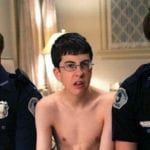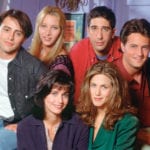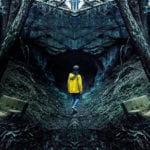 Weird Stuff
Weird Stuff  Weird Stuff
Weird Stuff  Politics
Politics 10 Political Scandals That Sent Crowds Into the Streets
 Weird Stuff
Weird Stuff Ten Bizarre Facts About The Doge Meme
 Our World
Our World 10 Ways Your Christmas Tree Is More Lit Than You Think
 Movies and TV
Movies and TV The 10 Coolest Stars to Set Sail on The Love Boat
 History
History 10 Things You Didn’t Know About the American National Anthem
 Technology
Technology Top 10 Everyday Tech Buzzwords That Hide a Darker Past
 Humans
Humans 10 Everyday Human Behaviors That Are Actually Survival Instincts
 Animals
Animals 10 Animals That Humiliated and Harmed Historical Leaders
 History
History 10 Most Influential Protests in Modern History
 Weird Stuff
Weird Stuff 10 Funny Ways That Researchers Overthink Christmas
 Politics
Politics 10 Political Scandals That Sent Crowds Into the Streets
 Weird Stuff
Weird Stuff Ten Bizarre Facts About The Doge Meme
Who's Behind Listverse?

Jamie Frater
Head Editor
Jamie founded Listverse due to an insatiable desire to share fascinating, obscure, and bizarre facts. He has been a guest speaker on numerous national radio and television stations and is a five time published author.
More About Us Our World
Our World 10 Ways Your Christmas Tree Is More Lit Than You Think
 Movies and TV
Movies and TV The 10 Coolest Stars to Set Sail on The Love Boat
 History
History 10 Things You Didn’t Know About the American National Anthem
 Technology
Technology Top 10 Everyday Tech Buzzwords That Hide a Darker Past
 Humans
Humans 10 Everyday Human Behaviors That Are Actually Survival Instincts
 Animals
Animals 10 Animals That Humiliated and Harmed Historical Leaders
 History
History 10 Most Influential Protests in Modern History
Top 10 Funniest Cartoon Shows Ever
Think you’re too old for cartoons? Think again. Some of the most hysterical shows in TV history have been animated, often only bluffing at younger audiences while sneakily saving the biggest yuks for adult viewers. Matricidal fantasies, sexual innuendos and unsparingly un-PC jokes seem more palatable on pen and paper, often giving cartoons leeway unavailable to us flesh-and-bone folks.
Here are the ten funniest cartoon shows ever, listed in order of their debuts. If you disagree, please refrain from smashing me with a mallet or pulverizing me with an anvil.
Top 10 Real-Life Inspirations For Famous Cartoon Characters
10 The Bugs Bunny Show (1960)
Ain’t he a stinker? Yes – an absolutely hysterical one. Premiering in 1960 and morphing into various iterations in the ensuing decades, The Bugs Bunny Show was more entertaining and flat out funnier than any animated series that came before it.
From its inception, the program was an ensemble vehicle – a means of showcasing the lengthy list of Looney Tunes and Merry Melodies characters that graced the airwaves starting in 1948. The Bugs Bunny Show used the franchise’s marquee character – that wascally wabbit himself – as a springboard to promote and popularize his cartoon cohorts, many of whom have become cherished characters in and of themselves. The despicability-professing Daffy Duck, the gregarious Foghorn Leghorn, the stuttering swine Porky Pig, the seemingly-too-angry-for-gun-ownership Yosemite Sam and the sexual assault enthusiast Pepé le Pew all made appearances under Bugs’ banner. In 1966, the show merged with another catch-me-if-you-can trickster to become The Bugs Bunny/Road Runner Hour, hysterically showcasing the thousand and one ways to kill a coyote, albeit temporarily.
But it was Bugs himself that often stole the show. Whether tricking hopeless hunter Elmer Fudd into shooting himself yet again, crossdressing as femme fatales ranging from Marilyn Monroe to Little Red Riding Hood, or conducting an opera singer into first nearly suffocating, then imploding the opera house upon himself, Bugs made superfluous injury fun as few others can.
9 Inspector Gadget (1983)
What’s the two-word answer to both 1) one of the funniest animated shows ever and 2) Matthew Broderick’s biggest career mistake? Would you believe… Inspector Gadget?
The only spinoff to make this list, Inspector Gadget is basically Get Smart minus the sexual tension – with a crafty niece named Penny replacing the sultry Agent 99 – and, instead of Maxwell Smart pursuing the evil but comedically futile KAOS syndicate, our cartoon Columbo bumblingly foils plots birthed by Dr. Klaw’s M.A.D. crime outfit.
The other link, of course, is Don Adams, the actor who both portrays Maxwell Smart and voices Inspector Gadget. A dunderheaded cyborg law enforcement officer, Gadget, like Agent 86 before him, saves the day through a combination of dumb luck and savvy help from secondary characters. Throughout, Gadget’s device are an inventive… well, device, allowing our hero to alternately overcome obstacles and screw situations up terribly. Traffic jam? Go-Go Gadget van! Plummeting to your imminent death? Go-Go gadget copter! Need to strangle a killer shark? Go-Go Gadget necktie … until the shark drags you around the tank like a marionette.
But the most effective tool in Gadget’s ample arsenal is Don Adams’ impeccable comedic timing. Few actors play the fool better than him – an awkward, face-palming and altogether hysterical idiocy that carries over to his animated avatar.
8 The Simpsons (1989)
When The Simpsons debuted on December 17, 1989 on the three-year-old FOX Network, George H.W. Bush was in his first year in office, the Berlin Wall had fallen just a month earlier and the Internet didn’t exist. Thirty-two years and over 700 episodes later, Matt Groening’s yellow-skinned family is the longest scripted television show in American history.
Although by today’s coarser standards the show is comparably docile, when The Simpsons debuted it was edgy to the point of widespread controversy. The recipe was there: An adult-ish cartoon on primetime network television with a character, Bart, emulated by kids everywhere. Almost overnight, T-shirts with Bart’s signature expressions – including “I’m Bart Simpson… who the hell are you?” – were banned from schools across the country.
Regardless, The Simpsons didn’t need controversy, because it was, and remains, flat-out funny. The best episodes revolve around Homer, the underachieving, hare-brain scheming, stereotypical sitcom doofus dad. But even when the donut-scarfing, Duff beer-chugging patriarch is sidelined, The Simpsons has the largest, deepest bench of recurring characters in TV to keep it from going stale.
An older-than-dirt and richer-than-sin boss with a fawning, obviously homosexual assistant. School days consisting of nerds, bullies, a stoner bus driver and checked-out teachers. A product-shilling kids show host named Krusty the Klown – aided mightily by the uber-violent Tom & Jerry knockoffs, Itchy & Scratchy. The Simpsons started with a family and built a broader universe that gave it both ample comedic outlets and, of course, staying power.
7 Ren & Stimpy (1991)
Looking back, it’s mind-boggling that the farting, nipple-obsessed adventures of an angry Chihuahua and his clueless cat cohort was a Saturday morning kids’ cartoon – and on the squeaky-clean Nickelodeon network, no less.
Stylistically, Ren & Stimpy alternates between a universe seemingly created by a stoner a few joints in (no one comes up with a superhero named Powdered Toast Man sober) and one dreamt up by that same stoner after finding his magic mushrooms stash. Visually trippy and musically eerie, the action catapults between a dog whose head is about to burst with rage, and a cat whose head has nothing in it to burst.
In one hysterical scene, Stimpy affixes a device to Ren’s head that keeps him uncharacteristically merry, before turning on his favorite tune, “Happy Happy Joy Joy.” As the song concludes, we see Ren, maniacally grinning ear-to-ear, bashing his unwanted helmet with a hammer along to the cheery chorus.
Not surprisingly, the show’s creators came into frequent conflict with concerned network executives. Several episodes had violent, gruesome, or suggestive scenes shortened or removed, including a sequence involving a severed head, and a close-up of Ren’s face being grated against a man’s stubbly beard. Fortunately, one signature scene survived the cutting room floor: a sing-songy commercial for Log, whose versatility includes being “great for a snack, it fits on your back, it’s Log! Log! Log!”
6 Beavis & Butthead (1993)
Uh-huh-huh-huh, you dumbass. Of course Beavis & Butthead made the cut. Despite the unforgivable crime of inventing modern reality television with 1992’s The Real World, MTV – short for Music Television – also contributed one of the most hysterical cartoons ever.
Beavis & Butthead were a product of their unique moment in time: teenage Gen Xers slacking off by doing the most slack-centric thing imaginable in the early ‘90s: watching music videos. Brilliantly, the show not only gave MTV a hit series but, through it, a vehicle to promote both music videos in general and certain artists in particular – typically head-banging acts the Metallica and AC/DC t-shirt-wearing pair could thrash along to from their well-worn couch.
The show is so stupid that it’s smart. A pair of white trash-adjacent, semi-literate 14-year-old miscreants sticking M-80s up frogs’ asses, stabbing each other in the eyes with pencils in class, and hopelessly pursuing every pubescent male’s perpetual goal – to “score,” as Butthead so eloquently puts it.
At its heart, Beavis & Butthead has a Seinfeldian component to it, insomuch as the duo’s mundane adventures accomplish exactly nothing and have zero point. It’s just a couple of antihero losers failing at everything – and it just works. Notably, Beavis & Butthead birthed a successful spinoff, Daria (whom the two called – what else – “Diarrhea”), that received serious consideration for inclusion on this list.
5 South Park (1997)
A quarter-century ago, Trey Parker and Matt Stone premiered a crudely drawn cartoon on a little-known cable channel called Comedy Central. Showcasing the mountain-town tribulations of four 8-year-old boys, South Park’s pilot episode featured one of the children, Eric Cartman, getting abducted by aliens. Its title, “Cartman Gets an Anal Probe,” hinted at the groundbreakingly offensive humor to come.
South Park is great for two reasons, the first being its main characters. Cartman is a pudgy, foul-mouthed bigot who frequently goes full anti-Semite on his Jewish cohort, Kyle. Stan is the nervous “straight man” of the quartet, while Kenny, muffled under a hood, finds a way to get killed each episode.
The recurring cast is just as hysterical. A wise chef voiced by R&B singer Isaac Hayes who brags about his “chocolate salty balls;” a balding transvestite schoolteacher who can’t wait for someone to “pound my vag;” a Christmas Poo named Mr. Hankey who symbolizes the season’s rampant consumerism.
South Park is at its best when using a “child’s medium” – cartooning – to parody or troll society. One recent winner came when Cartman messes with his parents’ Amazon Alexa by swearing and adding disgusting items to their online shopping list. Many viewers reported that their own Alexa heard Cartman and acted accordingly – a brilliant prank indicative of the show’s mocking genius.
4 Family Guy (1999)
The Griffins did what few other shows have accomplished: they returned from a multi-year cancellation to achieve longstanding success.
The first three seasons of Family Guy were… OK. The animation was unrefined, and the show lacked the anything-goes, go-for-the-jugular bite that defines it today.
Like other contemporary cartoons, Family Guy gets away with comedy that would cause human-acted shows to get cancelled – both from networks and uber-sensitive society in general. Gay jokes; racist tropes (including a money-loving Jewish storeowner and an episode where Peter, obsessed with his new bullwhip, conspicuously approaches the home of his Black friend); an insatiable neighbor’s rapey escapades; and even the frumpy daughter’s frequent suicidal gestures are all leaned into without fear of repercussion – a refreshing offensiveness in the vein of Archie Bunker.
Two of Family Guy’s attributes stand out among also-rans. First, the show both knows and double-downs on its audience: young and middle-aged men. A prime example is its epic, inside-gag-riddled Star Wars parodies, starring Peter as Han.
The second is the simple fact that the baby, Stewie, might be the funniest cartoon character of all time. A wise-cracking, sexuality- ambiguous evil genius, Stewie waffles between inventing inter-dimensional travel and not knowing his shapes, while employing the show’s signature cutaway segments to reference everything from matricide to dancing topless at a gay bar.
3 The Ricky Gervais Show (2010)
How talented is Ricky Gervais? He did something never intended to be a cartoon that became among the most laugh-out-loud funny animated series ever.
In 1998, Gervais and fellow comedian Stephen Merchant started a radio series that was mostly just them telling silly stories. It aired for a few months before ending so the pair could collaborate on the soon-to-be-legendary TV series, The Office. The radio show returned in 2001 with a producer named Karl Pilkington. It was a match made in comedic heaven… because Pilkington is an idiot, and Gervais’ brand of humor is made for mockery.
Karl’s comments were so odd, and his answers to standard hypothetical questions so inanely imagistic (Ricky: “What would you do if you knew the world was ending?”; Karl: “Well… I’ve always wanted to kick a duck up the arse.”) that making a surefire hit cartoon meant nothing more than animating a ready-made, prerecorded radio program.
As an unintentional comedic motherlode, Karl’s moronic brilliance cannot be overstated. Here’s a highlight reel, where he muses how he’d trust jellyfish more if they had eyes (“since, you know, you can look a fish in the eyes.”); repeatedly calls British film star, Clive Owen, Clive “Warren,” prompting a hilarious cutaway sequence; and answers a question about what he’d do with an exact clone of himself by wondering aloud: “How would I know which one I was?”
2 Rick & Morty (2013)
Rick & Morty follows the freewheeling, intergalactic adventures of a megalomaniacal septuagenarian and his tepid teenage grandson. Armed with a portal gun and an endless arsenal of gadgets, weapons and anecdotes, Rick Sanchez drags his hesitant helper, Morty, on hilarious half-hour missions ranging in importance from the annihilation of Earth to a multi-thousand-some orgy with a goddess-like former love interest who embodies the residents of an entire planet.
The show has an obvious advantage: a literally infinite universe from which to invent sick, weird, nerdgasmic comedy. Rick takes his son-in-law, Jerry, to a spa with an invincibility shield. Alien children run around with real guns shooting each other, but pop right back up because dying is impossible… until Rick gets into a fight on a rollercoaster, which spins out of control and shatters the forcefield. The same kids shoot each other again; this time, they stay dead.
No plot? No problem, Rick can just turn on the intergalactic cable and let hilarity ensue, like a leprechaun getting gutted by kids for his Strawberry Smiggles. “Jeez, Rick,” says Morty. “That’s some pretty hardcore stuff for a cereal commercial.”
In another episode, Rick and Morty embark on a roundabout, time-traveling journey to 1998, for the express purpose of getting a short-lived dipping sauce that McDonald’s introduced to promote a Disney movie. The episode was so popular that McDonald’s brought the sauce back for a limited time.
1 Son of Zorn (2016)
This list’s most recent and shortest-lived entry is “Who Framed Roger Rabbit?” on steroids. Son of Zorn depicts an animated barbarian brute dropped into modern day, live action society, complete with a human ex-wife and son. It’s basically He-Man in suburbia – if He-Man told R-rated jokes and threatened to murder innocent people.
The premise: A warrior from the fictional island of Zephyria moves to Orange County, California, to reconnect with his ex-wife, played by Curb Your Enthusiasm’s Cheryl Hines, and teenage son Alangulon, nicknamed “Alan.” Zorn tries his best to pick up where he left off with Alan (impressed, Hines notes that Zorn has “got a job, got an apartment, even freed all his slaves!”), but is perpetually thrown off course because… well, because he’s a cartoon barbarian. Along the way, Zorn gets a job where he literally can’t comprehend his boss’ womanhood, and incessantly intimidates his ex-wife’s boyfriend, played by Tim Meadows.
In one scene, Zorn orders a steak at dinner. Asked how he’d like it cooked, he answers “Uh… not. Let’s go with ‘not’.” Later, he gifts his son a giant animated falcon from his homeland. When Alan’s mom refuses, a miffed Zorn stabs the enormous bird with his sword.
Unfortunately, Son of Zorn never really found an audience, and lasted just a single season. Netflix, Amazon and Hulu: we’re looking at you for a revival.
Top 10 Pro-Nazi Propaganda Cartoons From World War II








